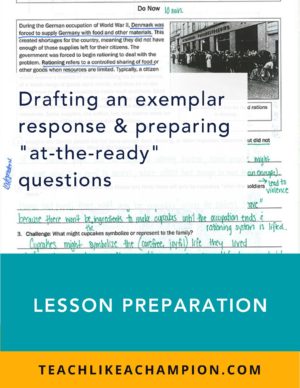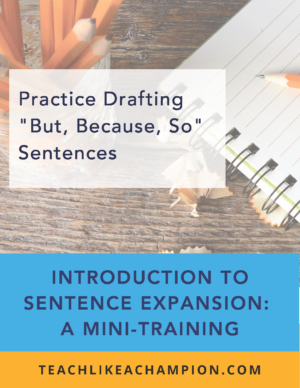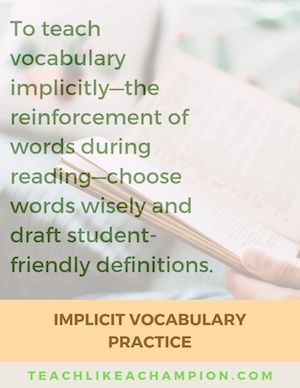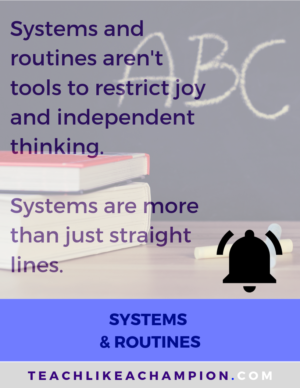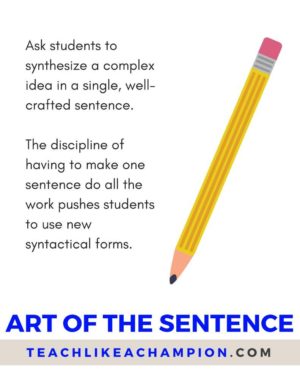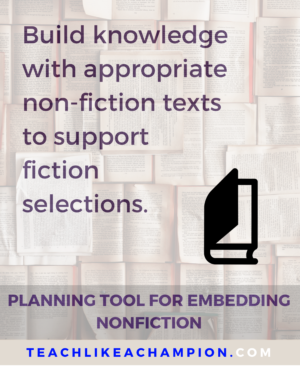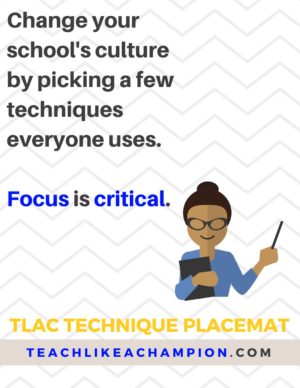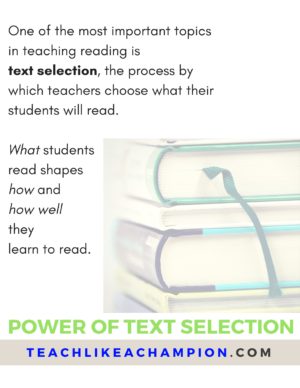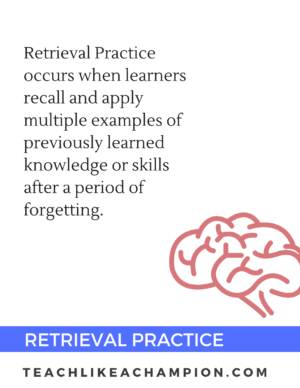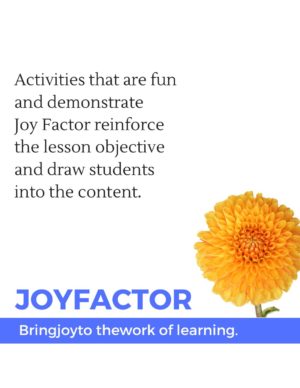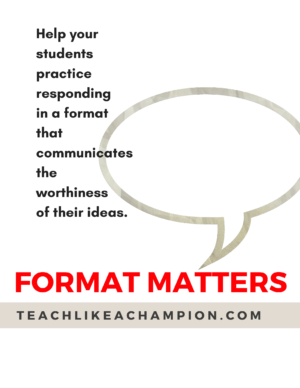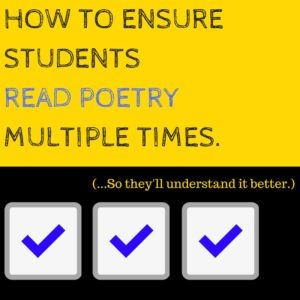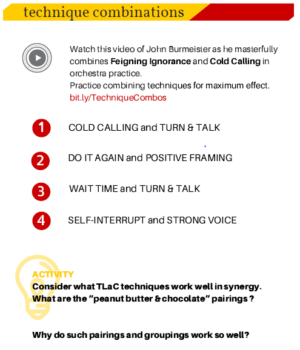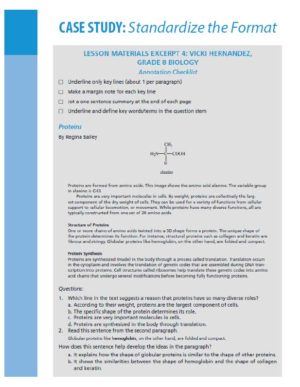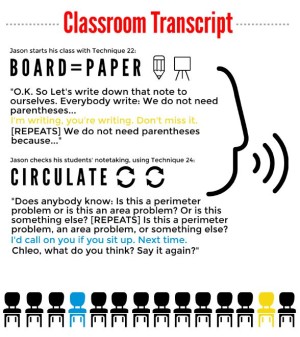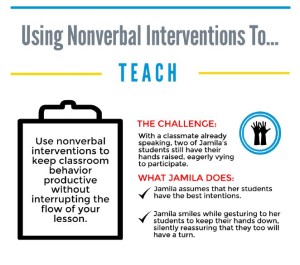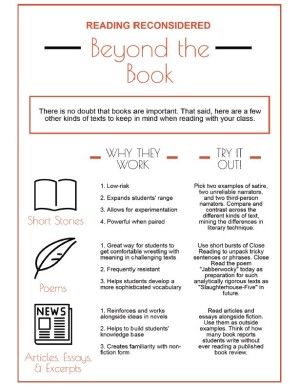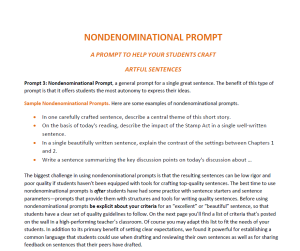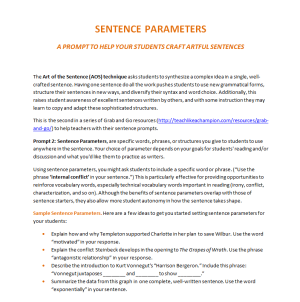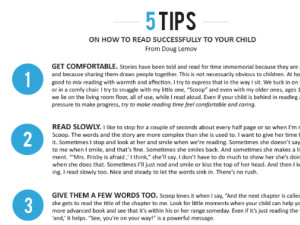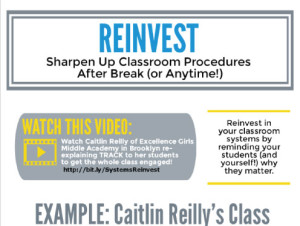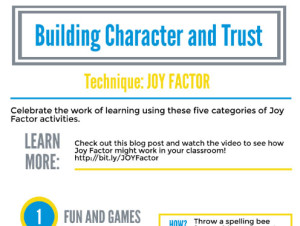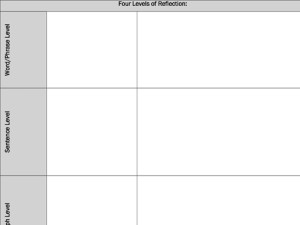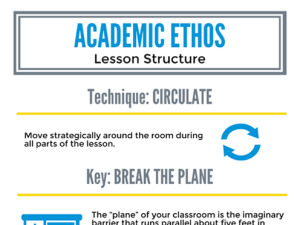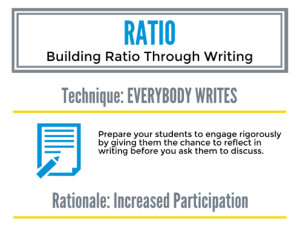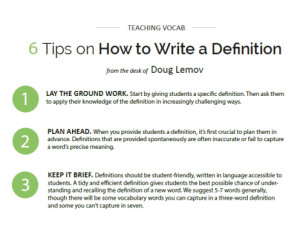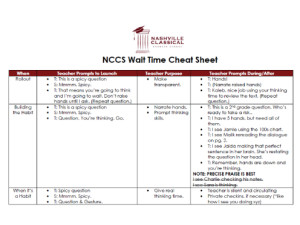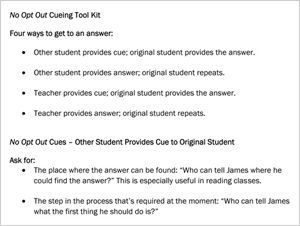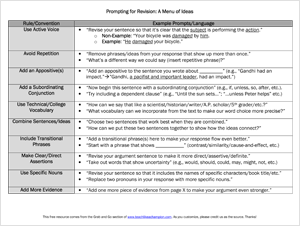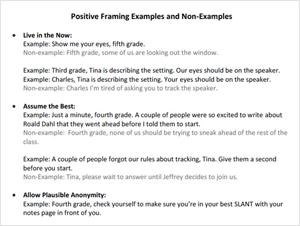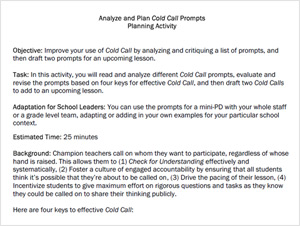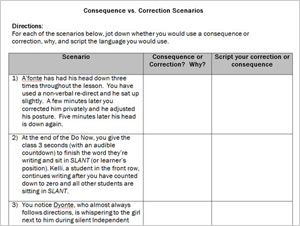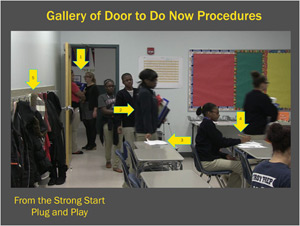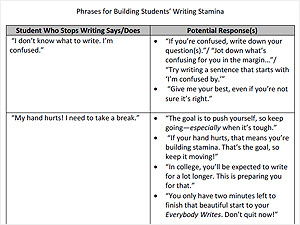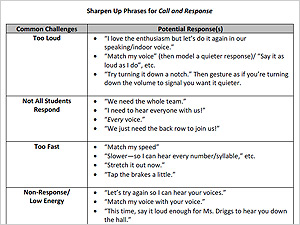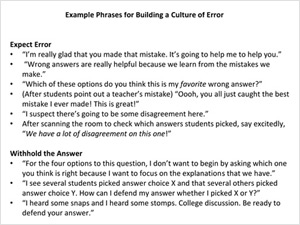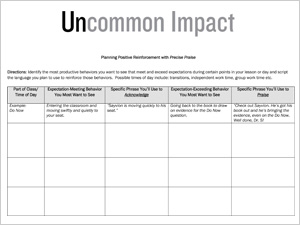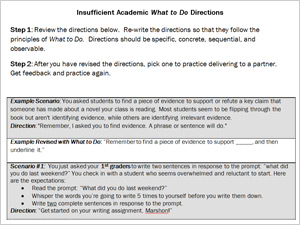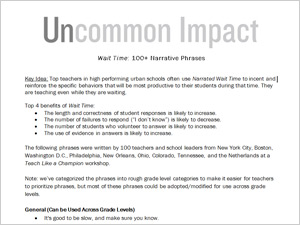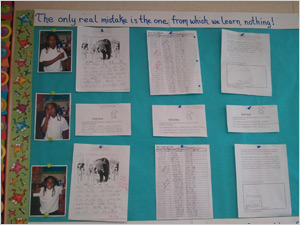Read, Write, Discuss, Revise
Ensure every student thinks deeply about lesson material by creating the opportunity for them to refine their thoughts and ideas through discussion.
Click here to download >>
Lesson Preparation is what you do after your lesson is planned but before you teach it to ensure its success.
Click here to download >>
Sentence expansion is a writing exercise that pushes students thinking and development as writers. In this mini-training, teachers can experience the “But, Because, So” activity as adult-learners and then practice drafting a similar activity for their own students. The best part? It’s not just for ELA teachers. It requires rich content and works across all subjects.
Click here to download >>
Routines Boost Your Students' Ability to Thrive
Rather than tamp down individuality, systems and routines offer students the ability to thrive.
Click here to download >>
Strengthen Writing & Thinking Through Show Call
Show Call is a type of Cold Call that displays students’ written work to the class and is particularly effective at managing the quality and content of student written work.
Click here to download >>
Strengthen Knowledge Building
Embed long term learning through Common Place Books and Factual Margin Notes.
Click here to download >>
Support Close Reading Skills
Close Reading starts with establishing meaning and a close attention to text.
Click here to download >>
More Thinking, More Hands
Allow students time to think before answering questions you pose for increased breadth of participation and depth of thinking.
Click here to download >>
Assess Learning With Exit Tickets
Gain valuable class-wide feedback on lesson comprehension with Exit Tickets.
Click here to download >>
Support Vocabulary Development
Use a variety of different methods to expand and support the vocabulary development of your students.
Click here to download >>
Use sentence level revision to strengthen student syntactical control, which will make your students better writers regardless of the type of writing they undertake.
Click here to download >>
Start Your Year Off Strong
Prioritize which techniques to use in your classroom to set the tone for the entire year.
Click here to download >>
Guide teachers to finding their authentic teaching voice through Practice vs. Role Play: leaning on what works for other teachers.
Click here to download >>
7 Tips for Better Formative Writing Prompts
Develop reflective and critical thinking skills in your students by using formative writing prompts in all curricular areas.
Click here to download >>
Planning Tool for Embedding Non-Fiction
Build knowledge with appropriate non-fiction texts to support fiction selections.
Click here to download >>
No Opt Out Options Flowchart
Turn an "I don't know" into an opportunity by ensuring that students who won't try or can't answer practice getting it right.
Click here to download >>
Do Now Checklist and Resources
Start your teaching day off right with a Do Now ready for your students as soon as they walk in the door. Use this checklist to remind yourself of best practices and these resources to help craft relevant, sharp Do Nows.
Click here to download >>
Use this placemat to help teachers remember and organize the TLAC techniques in the classroom. Prioritize which techniques will be implemented by everyone.
Click here to download >>
Own and Track: A four step process
Teach Like a Champion Technique 10: Own and Track, a four step process
Click here to download >>
Five Tips on How to Read Successfully to Your Child
Everyone knows the importance of reading aloud to children, but it can be a daunting task for a lot of parents. Here are some pointers that can help put parents at ease and make it an enjoyable experience that both parent and child can look forward to.
Click here to download >>
Here's an infographic to keep in your top drawer. Peek at it the next time you (or the first year teacher across the hall) could use a little classroom pick-me-up. Make these Joy Factor activities your own!
Click here to download >>
Everyday Reading Response Template
Check out this everyday reading response template to help build student comprehension and attentiveness to critical portions of text. It’s an excellent tool for daily Close Reading. With this template students will practice some key Close Reading skills and, because it’s so easily reused every day, they’ll practice them regularly. This is important as we give students more and more opportunities to close read on their own, or “Solo” as it’s called in our forthcoming book, Reading Reconsidered (due out in February and ready for pre-order now). Download the tool by clicking on the Download button, and read more about how to use the tool in this blog post.
Click here to download >>
Here’s a printable infographic to keep at your desk or at the ready (for when that new teacher next door approaches you for concrete advice)! Circulate is a powerful way to engage students using the tools of affirmation and accountability.
Click here to download >>
Here’s a printable infographic to keep at your desk or at the ready (for when that new teacher next door approaches you for concrete advice)! Show Me is a powerful way to check for understanding and also: to gather data on student mastery.
Click here to download >>
Two Infographics: STAR/SLANT and Everybody Writes
Class discussions are at their best and most effective when every student actively participates. This Grab & Go provides two infographics that breakdown the “STAR/SLANT” and ”Everybody Writes” techniques from Teach Like a Champion 2.0 – print them out and keep on your desk as a nice reminder of ways to keep your students engaged in academic content.
Click here to download >>
6 Tips on How to Write a Definition
Crafting definitions that are both accurate and student-friendly is one of the most challenging and overlooked aspects of vocabulary instruction. This Grab and Go provides six tips to create definitions that are useful, accessible, and accurate.
Click here to download >>
Five Tips on How to Read Successfully to Your Child
Everyone knows the importance of reading aloud to children, but it can be a daunting task for a lot of parents. Here are some pointers that can help put parents at ease and make it an enjoyable experience that both parent and child can look forward to.
Click here to download >>
Giving students time to think before answering questions encourages a higher-quality initial answer instead of the first answer a student can think of. Also, there are several steps necessary to teach and remind your students to use their Wait Time effectively. Charlie Friedman, principal of Nashville Classical Charter School, created a Wait Time Cheat Sheet after noticing that teachers on his team struggled to make Wait Time transparent.
Click here to download >>
No Opt Out Cueing Tool Kit
One consistency among champion teachers is their vigilance in maintaining the expectation that it’s not OK not to try. One key step in the process is eliminating the option for students of "opting out": muttering "I don’t know" or shrugging impassively when asked a question. How a teacher chooses to respond to a student’s “I don’t know” can be pivotal in the life of a classroom. This month’s Grab and Go resource provides ideas for how to respond effectively.
Click here to download >>
Menu of Ideas for Revising Writing
To teach students to write well and to optimize the synergies between reading and writing, it’s important to distinguish between editing and revising. Editing is the task of marking up and making improvements to a document. It includes technical errors, like capitalization, punctuation, and spelling. Revising is the process of improving writing—specifically by revising sentence structure or word choice to refine ideas. Although both are...
Click here to download >>
Positive Framing Examples and Non-Examples
People are motivated by the positive far more than by the negative. Seeking success and happiness will spur stronger action than seeking to avoid punishment. The power of the positive should influence the way you teach. Positive Framing, then, is about framing your interactions— particularly corrections of the academic and behavioral variety—so that they reinforce this larger picture of faith and trust...
Click here to download >>
Analyze and Draft Cold Call Prompts
In the forthcoming edition of Teach Like a Champion 2.0, Doug writes, "If I were working with a group of teachers and had to help them make the greatest possible improvements in the rigor, ratio, and level of expectations in their classroom with one technique, the technique I’d choose might well be Cold Call, the practice of calling on students regardless of whether they raise their hands." When executed well, Cold Call enables teachers...
Click here to download >>
Consequence vs. Correction Case Studies
One of the trickiest aspects of managing behavior and culture is deciding when to give a consequence versus a correction. The question is tough because teachers must decide each scenario on a case-by-case basis and they need to do so swiftly, consistently, and repeatedly. The truth is, sometimes, we’re going to get it wrong. But, if you’ve got guidelines to help yourself make the decision and language at-the-ready...
Click here to download >>
Engineering Efficiency with Strong Start
Strong Start, one of the new techniques featured in Teach Like a Champion 2.0., maximizes the time between the moment students walk through the door and when the main lesson begins, building engagement in meaningful work as well as positive and productive student habits. For this month’s Grab and Go resource, we decided to take a photo from our Strong Start Plug and Play on this technique and put it under the microscope...
Click here to download >>
Phrases to Build Students' Writing Stamina
Adding Everybody Writes to your lesson is one of the best ways to instantly boost rigor in your classroom. For students to reap the full rewards of this technique, they need to be writing the entire time. This Grab and Go resource helps you anticipate common expressions of struggle – “I’m not sure what to write,” or “I’m already done,” for example– and equips you with at-the-ready phrases to prompt students to continue writing.
Click here to download >>
Sharpen Up Phrases for
Call and Response
When your students return in the fall, you’ll be concentrating in the first weeks on establishing a positive, engaging, productive academic culture. One technique teachers use to inject energy, maintain focus, emphasize key words or ideas, and support clarity of directions is Call and Response. With Call and Response, the teacher gives a clear cue (verbal and/or nonverbal), and the entire class responds in unison.
Click here to download >>
As Doug has described frequently in the blog and forthcoming in Chapter 2 of Teach Like a Champion 2.0, your ability to effectively Check For Understanding largely depends on whether or not, you, the teacher, have established a strong Culture of Error—an environment where students feel safe revealing and learning from their mistakes. One of the most effective ways to build this kind of culture is by intentionally planning out what you’ll say to students during your lessons—especially when they make mistakes or take academic risks.
Click here to download >>
Inevitably at our workshops, we have more content than we can get to. Here’s a simple, powerful planning activity that all teachers can use to increase students’ consistency with and eagerness to meet and exceed expectations. Naming the specific actions a student is taking helps the student to replicate that action in the future and guides others for what to do as well. Precise Praise teaches and motivates. Bonus! This works for spouses and your own kids too.
Click here to download >>
Make Your Academic Corrections What to Do
What to Do means giving students specific, concrete, observable directions—in sequence—to tell them What to Do, as opposed to what NOT to do. Although often used to help students meet high behavioral expectations, What to Do is also an important tool for supporting students’ academic behaviors. Use the attached worksheet to identify opportunities to clarify and sharpen your expectations for academic tasks when you see students struggling.
Click here to download >>
100 Phrases for Narrating During Wait Time
Top teachers in high performing urban schools often use Narrated Wait Time to incent and reinforce the specific behaviors that will be most productive to their students during that time. They are teaching even while they are waiting. Here are 100 phrases written by 100 teachers and school leaders at a Teach Like a Champion workshop. Ensure you’ll use one or two of these phrases by scripting them into an upcoming lesson plan.
Click here to download >>
What’s that finger-snapping you’re seeing in a Teach Like a Champion video clip—as the class snaps a couple of snaps as one student strives to answer a challenging question? An example of a Prop! Props are a form of public praise for students who demonstrate excellence or exemplify virtues. Build a culture that valorizes achievement and effort in your class (and do it without sacrificing order of "time on task"). This month’s download is a quick cheat sheet of Props. Borrow or adapt from this list of tried-and-true to add joy to any lesson.
Click here to download >>
Fostering a Culture of Error
Last April, the TLAC team visited California where we spent two days with Aspire Public Schools. We worked on creating a strong Culture of Error – a classroom environment that is strategically engineered to encourage students to take academic risks in order to uncover and correct misunderstandings. Michelle Flores sent us a picture of a bulletin board in her classroom that she uses to celebrate students who make and then learn from their mistakes. Thank you, Michelle and Aspire!
Click here to download >>


